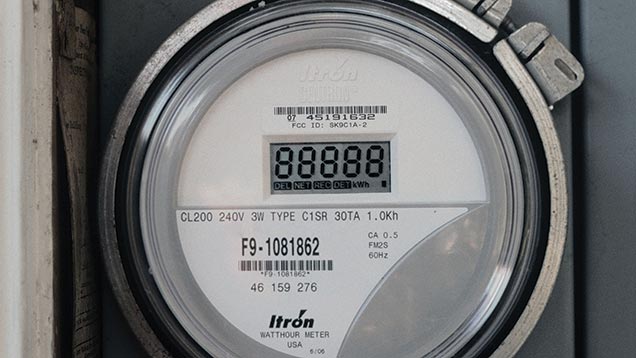Changes on the way for electricity meters and bills
 © Connection/REX Shutterstock
© Connection/REX Shutterstock Farm businesses that are not already on half-hourly electricity supply contracts and metering could be moved onto such contracts under Ofgem’s P272 metering regulations being rolled out this autumn.
From November, electricity suppliers will start replacing old “spinning-disc-style” meters in the 05-08 profile class (identified at the top of electricity bills) with digital smart meters that record and report use in half-hourly periods.
See also: Baffled farmer hit by £54,000 water bill
While there should be minimal disruption and no cost to consumers for the meter change itself, installation of the meters means businesses on standard profile supply contracts (equal charge for electricity regardless of when it is used) will be moved to half-hourly billing that prices energy according to when it is used .
This could mean savings for some, but increased costs for others depending on when most power is used, says Kieran Crowe of Strutt & Parker.
“If a consumer uses most energy during low-demand periods [when unit costs are lower], such as midday or at night, their energy bills will most likely reduce. However, if a consumer uses most energy during peak times, bills will significantly increase.”
Pig and poultry producers with relatively even electricity demand may see bills fall, but dairy units milking around teatime – coinciding with peak demand and higher prices – could end up paying more, says Andrew Kneeshaw of the Farm Energy Centre.
“If you are able to change your energy consumption profile and avoid putting a lot of load into peak periods then you can probably get a better price in the future,” he says.
But he also advises farmers that half-hourly pricing is based on a historical consumption profile from the previous year, resulting in a time lag before changes in practice reduce bills.
Mr Crowe believes the move to smart metering and more accurate pricing will ultimately benefit farm businesses by allowing farmers to understand how much is being used during peak times and identify opportunities to change practices, such as using timers on water heaters and chillers, or drying grain at different times.
However, he also warns that shifting electricity use will have a limited effect on bills as non-energy charges (such as transmission costs, metering and billing) now account for more than half of the total bill.
Shop around
Charges at peak times for half-hourly contracts have historically been slightly higher than those for standard billing – it remains to be seen whether that continues when new meters are installed, says Mr Crowe, who says it may be worth negotiating with suppliers or looking around for a better deal.
Electricity supply companies will automatically take on the role of operating the smart meter, often through an internal third party. However, it may also pay to shop around for an independent meter operator. Costs typically range from £250-£500/year for the meter operation, which involves maintenance and data collection, so there is scope for savings, he adds.
Employing an independent meter operator to maintain the device and transfer data to the electricity supplier can also be of benefit in the event of a dispute over meter readings between customer and supplier, he says.
Customers with automatic meter reading (AMR) meters that can be configured remotely will not need a replacement unit, but those not already on half-hourly contracts will be moved to one between November this year and April 2017.
